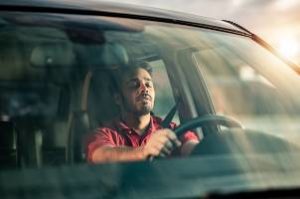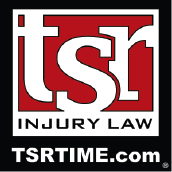Challenges of Proving a Crash Resulted From Drowsy Driving
 Many people do not fully understand how tired they are each day, as they rarely get enough sleep. That may be why many people get behind the wheel while they are tired without a second thought. Unfortunately, this can be extremely dangerous, as fatigued driving greatly increases the risk of a dangerous crash.
Many people do not fully understand how tired they are each day, as they rarely get enough sleep. That may be why many people get behind the wheel while they are tired without a second thought. Unfortunately, this can be extremely dangerous, as fatigued driving greatly increases the risk of a dangerous crash.
When these crashes happen, victims may have questions about proving the other driver was drowsy. Short of taking a picture of the other driver asleep in his or her vehicle, how do you prove the other driver was nodding off?
Fortunately, there are other ways to establish the at-fault driver may have been fatigued or asleep at the time of the crash. Victims of these collisions should strongly consider contacting an experienced attorney to help them prove their case. Not only do attorneys have the legal knowledge to build a strong case, but they also have the resources to build a strong case.
Why Do Drowsy Driving Crashes Happen?
Lack of sleep is often the reason a driver is tired. However, there can be various reasons a driver did not get enough sleep.
Sleep Disorders
For example, some people struggle with sleep disorders, like sleep apnea or narcolepsy. Sleep apnea causes people to repeatedly stop and start breathing throughout the night, which hurts their ability to get a good night’s sleep. People with sleep apnea often suffer from daytime fatigue, are excessively tired during the day and may struggle to pay attention during waking hours.
Narcolepsy is another type of sleep disorder that can cause people to fall asleep at random times throughout the day. For example, they may fall asleep while they are out on the road.
Working on Late Shifts
People may also from a lack of sleep due to shift work. For example, if someone works irregular hours or on a night shift, they may struggle to get enough sleep. They may often drive to or from work while they are severely sleep deprived.
Impairment
Drowsy driving may be the result of alcohol consumption or prescription medications that induce drowsiness. There are also over-the-counter medicines that can make drivers tired, like cold or allergy medicines.
Building a Case Against a Drowsy Driver
The law requires the at fault driver knew or should have known their drowsiness was an issue before a crash. Your attorney can obtain medical records showing a driver had a history of sleep apnea or narcolepsy. Records can also show what medications the driver was taking (perhaps Benadryl for the flu) that causes drowsiness.
Employment records could be used to prove the at-fault driver kept irregular hours or worked a lot at night. It is possible the at-fault driver was attending school and working. School attendance records could be used to show the driver took classes at night or spent much of the day at work or school, leaving little time for a full night of rest.
Your attorney may also be able to obtain cellphone records, review social media posts and even obtain credit card data showing the driver had been awake for an extended period.
An analysis of the crash scene may indicate drowsy driving. For example, if there were no skid marks left by the at-fault driver’s vehicle, it may indicate the driver was too tired to try to stop and avoid a collision. Black box data can show sudden reactions when a driver “wakes up” and tries to over correct a steering wheel.
Head-on collisions are often caused by drowsy driving, as sleep-deprived drivers may cross the center line and drift into oncoming traffic without realizing it. Accidents caused by failing to maintain a lane may be another result of drowsy driving.
Drowsy driving crashes may be more likely to occur at night, early in the morning or in the middle of the afternoon. This may be one factor your attorney cites as evidence of distracted driving, in addition to other factors.
If you noticed signs the at-fault driver was tired after the crash, inform the responding police officer and tell your attorney what you observed. For example, if you notice these symptoms, it may be evidence of drowsy driving:
- Irritability
- Constant yawning
- Rubbing the eyes
- Bags under the eyes
- Moving slowly
- Not remember what happened before the crash
- Frequent blinking
- Trouble paying attention
- Seeing a head bob before impact or a driver’s head slumped over
If you have a dashboard camera or there was a surveillance camera, it may show the other driver asleep or looking tired in the moments before the crash.
There may be witnesses who observed the driver yawning or with his or her eyes closed. He or she may have observed the driver operating his or her vehicle erratically.
Injured by a Drowsy Driver? Call TSR
For decades, the Bloomington-based vehicle collision attorneys at our firm have been advocating for those injured by another driver’s negligence. We have successfully recovered $1 billion in compensation in a variety of cases, many involving negligent drivers.
If you have questions about the benefits of hiring an attorney or whether you may have a valid claim for compensation, give us a call today. The initial consultation is free. There are also no upfront costs or fees to pay while we work on your case.
Licensed Attorneys. Proven Results. Call (612) TSR-TIME.



